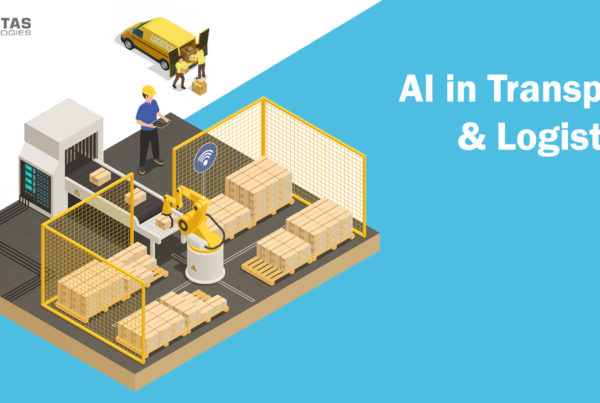
What is Robotic Process Automation?
Consider that you have to extract data from thousands of invoices every day. It will be an extremely tiresome task and will also incur a massive cost. Also, add on the errors and the time required to do the job. Just imagine, if you could do the same job more efficiently, with zero errors, and with substantially low costs. This is the gift of the new-age technology: The RPA. Robotic Process Automation is a technological marvel that automates the day-to-day execution of pre-defined tasks. In simple words, RPA uses computer software, governed by business logic, to perform repetitive tasks.
How does it work?
There are fundamentally 3 steps that are involved in getting your task done by RPA:
- Designing a software
You must get software created according to the requirements of the task. This should involve a set of pre-defined instructions to be followed for the software to imitate human actions.
- Integration
RPA works by combining the data from all systems. There are two basic ways of integrating the RPA tools with other applications which are:
-
- Backend connection
Backend integration is generally used for unattended automation that hardly requires any human intervention. It allows the software to access services under the control of process automation software.
-
- Frontend connection
Frontend automation allows the software to read and write data. It can also take inputs from the user interface just like a human.
- Performance
After compiling data and inputs from various IT systems the automation can now carry out the instructions. There is also another kind of AI-powered RPA whose job is to analyze the data and provide intelligent recommendations to the user.
What are the benefits of RPA?
There are several reasons why industries should prefer to gradually introduce RPA into everyday tasks.
- Efficient resource management
Employing lesser employees will help in effectively catering to their needs.
- Operational flexibility and scalability
Automation helps in increasing demand and also properly handling it.
- Better visibility into process performance
Monitoring the tasks becomes quite effortless.
- Minimization of human errors
Small errors multiply in huge organizations and can cause serious issues.
- Better compliance with standards and regulations
The quality of the error-free products is at par with the standards.
- Enhanced customer experience
RPA enables employees to devote more time to serving customers.
Related Article– The Future Of Manufacturing
Exploiting these benefits of automation, industries have skyrocketed their productivity and hence, profits. Arduous and complex tasks are now simpler and easier to manage. RPA also helps in streamlining critical processes. Cost optimization and lesser maintenance charges increase profits even further. When the employees are assisted in performing mundane tasks, a huge load is shifted from their shoulders. This leads to an increase in productivity and job satisfaction. It is a perfect win-win situation for both the employers and the employees
How RPA overcomes the problem of manual inspection?
Even till date manual inspection plays a key role in industries such as production, corporate offices, security, and many more. However, manual inspection has several loopholes like:
- Time-consuming
- Incurs huge cost
- Cases of errors in manual inspection
If the systems are automated, these challenges can be overcome. Since the entire framework is digital, everything is just a click away. These software ‘robots’ can produce their own performance reports, alarming the users when required. Thus, the user can assess the performance and maintenance needs of the specific task effortlessly.
Also, Read Machine Vision’s Role For Enhanced Quality Check In The Automotive Industry
Several industries where RPA can be used extensively are:
1. Banking
The banks, in spite of the recent digital innovations, still are ill-reputed for their lengthy processes. RPA in banks can be used to confirm loans, fill forms, and accept appointments. It will make the processes hassle-free and prompt.
2. Human resources
An HR department can be found in almost all huge corporations. Several monotonous tasks like vetting employees, claims for expenses and processing applications can be automated.
3. Healthcare
RPA in healthcare is an extreme necessity now. According to the International Journal of Health Services, administrative work consumes one-sixth of U.S. physicians’ working hours and also lowers their career satisfaction. Small tasks such as fixing appointments, filling forms, and billing should definitely incorporate automation.
4. Production
The use of RPA can be done in tasks such as extracting data from invoices, recording transactions, and tracking the goods.
Also, Read Industries That Could Be Transformed By Machine Vision
Conclusion
Undoubtedly, Robotic Process Automation is a revolution not only in production but in almost all sectors with its wide spectrum of advantages. According to Gartner, the RPA software revenue grew 63.1% in 2018, making it the fastest-growing segment of the global enterprise software market. Also, Gartner predicted that the RPA software revenue would reach a whopping $1.3 billion in 2019 from $846 million in 2018. In the future, RPA combined with machine learning (ML) and artificial intelligence (AI) can be trained to make judgments and deliver outputs. Clearly, RPA will prove to be the game-changer innovation that the enterprises were looking for. Success with RPA is not a question of if, but when.
Register For Our Upcoming Free Webinar





